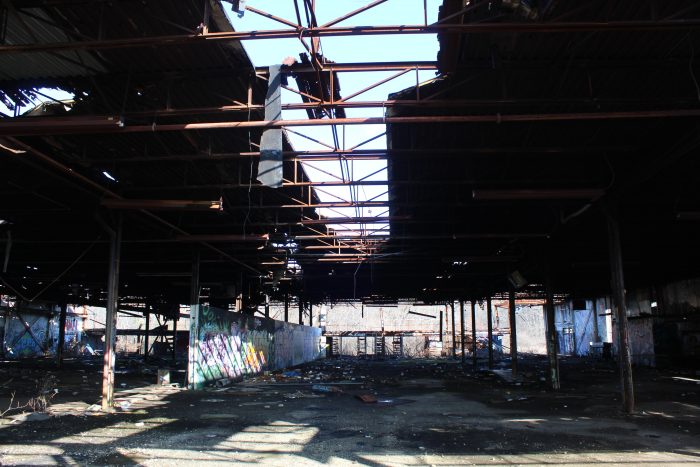By Daniel Dunaief
Cases of syphilis, a sexually-transmitted infection, have climbed dramatically on Long Island over the last decade and have continued to increase, creating a health care risk for those infected including pregnant women and their unborn children.
The number of infectious syphilis cases on Long Island quadrupled between 2011 and 2021, reflecting a national trend, Dr. Cynthia Friedman, Director of Public Health Suffolk County Department of Health Services, explained in an email, citing Centers for Disease Control and Prevention data.
“Unfortunately, case numbers continued to increase through 2022,” while 2023 numbers were not yet finalized, Friedman added.

The incubation period for syphilis is between two and three weeks, with primary symptoms including painless open sores or ulcers and enlarged lymph nodes near the sore.
Left untreated, syphilis can progress through four stages, from primary, to secondary, latent and tertiary, with the last of those occurring in about 30 of cases and threatening the heart and brain and potentially causing death.
“The CDC and New York State Department of Health have issued advisories urging providers to screen their patients for syphilis when appropriate,” Friedman wrote. “Prevention of congenital syphilis is a priority.”
Indeed, pregnant women can pass along syphilis to their unborn children.
Children born with syphilis look healthy, but develop problems as they age.
“It’s a life-long debilitating disease” for infants, said Dr. Sharon Nachman, Chief of the Division of Pediatric Infectious Diseases at Stony Brook Children’s Hospital. “It affects the brain, bones, growth, teeth and every part of the body.”
Nationally, the number of children born with syphilis has also increased, with CDC data indicating that 3,700 were born with the disease in 2022, 10 times the level from 2012.
Area hospitals have been actively screening pregnant women for syphilis and, in cases where tests come back positive, have been prescribing Bicillin L-A, a form of penicillin that treats the disease and protects unborn children.
“We at Stony Brook have been very aggressive about knowing each mother’s status,” said Nachman.
At Huntington Hospital, pregnant women are also screened at least three times, on initial intake, in the middle of a pregnancy and on admission to the hospital, explained Dr. Mitchell Kramer, Chairman of the Department of Obstetrics and Gynecology.
Suffolk County runs a Congenital Syphilis Prevention Program, which follows women who test positive for the infection during their pregnancy to ensure they are adequately treated and that their infants receive appropriate monitoring and follow up, Friedman wrote in an email.
Still, infections occur among newborns in the county.
“There are generally a few babies born with congenital syphilis in Suffolk County each year,” explained Friedman. “This usually occurs when mothers have had no or limited prenatal care.”
Supply of medicine
Hospitals have been extremely careful with their supply of Bicillin L-A, which is the most effective and safest treatment for pregnant women who aren’t allergic to penicillin.
“Across our institution, nobody could touch those [treatments] unless they were treating a pregnant woman,” said Nachman.
Pfizer, which manufactures the drug, indicated in June that they have enough Bicillin to treat diagnosed cases of the disease.
Kramer said the earlier supply limitations of Bicillin L-A hadn’t been an issue in his practice, although he “wouldn’t be surprised if smaller health care facilities had a shortage.”
Causes of the increase
Health care professionals suggested several possible causes of the rise in syphilis.
An improvement in the prevention and treatment of HIV, the virus that causes AIDS, has likely led to a reduction in the use of condoms, which help prevent the spread of sexually transmitted infections.
An increase in the use of apps to find potential partners may also have increased the spread of these infections, said Nachman.
Additionally, some people may feel there is a “stigma associated with STIs” and may be reluctant to go to a doctor and ask for a test, said Kramer.
Numerous states have lost funding for STI prevention, which also likely reduced the awareness of the need for people to protect themselves, Kramer added.
Populations where there’s disparities in health services and that don’t have access to screening and treatment are “health care deserts” as patients “are not getting proper care and screening,” Kramer said.
Syphilis isn’t just a problem for any one age group.
The infection has been making the rounds at senior centers and assisted living facilities, with cases rising among people over 65 years old. Seniors who aren’t concerned about pregnancy can be at risk for contracting a sexually transmitted disease.
Area hospitals have been urging residents to understand the prevalence and health consequences of STIs and have urged people to protect themselves from the disease.
“There is a concerted effort to get the message out,” Kramer said.

















